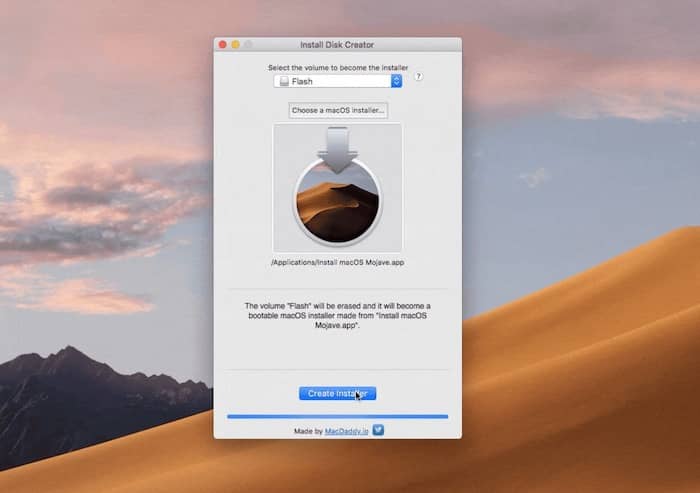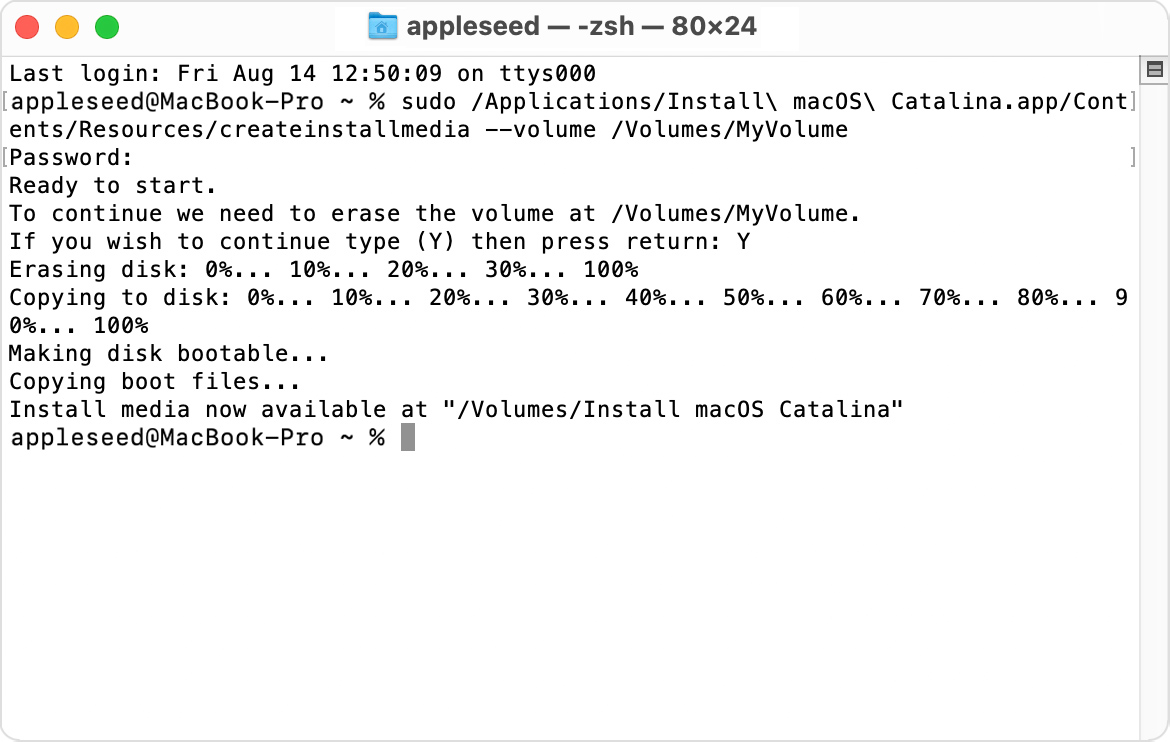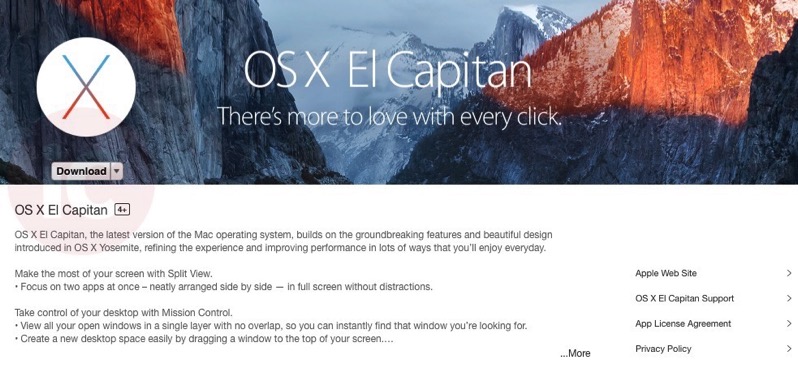Os El Capitan Usb Bootable
Preparation - get OS X El Capitan installer and USB flash drive. Download El Capitan installer (Install OS X El Capitan.app in Applications folder) available in Mac App Store. Prepare a flash drive with OS X Disk Utility. Format it with GUID Partition Table and name it as Untitled. The minimal capacity of flash drive must be 8 GB.
- Because of this, I recommend creating your own bootable El Capitan (OS X 10.11) installer drive on an external hard drive or USB thumb drive. If you need to install El Capitan on multiple Macs.
- For install the El Capitan on your startup volume, you need to create a bootable USB installer on a separate drive (USB pen drive). Keep A Backup For El Capitan Download Before Installing. You need to choose a good backup tool for backing up the existing OS’ files, folders, and applications.
There are two recommended installation methods for El Capitan download and install on your Mac PC or Laptop recommended by the Apple. Before use those installation methods you should need to have free space (around 12 GB) on your drive for keeping the installation files when installation is processing. If you do not have free space available on your drive, please use some cleaning software to clean up the drive to remove junk files and unnecessary application data and folders from the drive.
Then you must keep a backup of your previous file, folders, and applications before upgrading the El Capitan download installation. You can use a clone backup tool for backing up your Mac PC or laptop.
Install El Capitan Download On Empty Volume
In this method, you will be installing the Mac OS X El Capitan on an empty drive. The volume doesn’t have any files, folders or applications. There is no any startup volume on your PC when you are going to clean install El Capitan. So you can easily use the El Capitan installer to install the OS X into the clean empty volume.
Install El Capitan On The Startup Volume
In this method, you will be installing the OS X on your existing startup volume. Here you need to keep a backup of your data stored on the existing startup volume. For install the El Capitan on your startup volume, you need to create a bootable USB installer on a separate drive (USB pen drive).
Keep A Backup For El Capitan Download Before Installing.
You need to choose a good backup tool for backing up the existing OS’ files, folders, and applications. There are many tools and applications available on the internet for backing up the Mac OS X El Capitan download.
You can check whether the created bootable drive is working properly by checking system preferences and selecting the startup disk pane and booting the backed up drive.
How To Create A Bootable Installer To Install El Capitan Download
Apple Mac Apps store allows you to El Capitan installer directly. All you need to do is navigate through the Mac Apps store and find the appropriate link to El Capitan download. Next, you need to do is to create a bootable USB installer. Before you do this step please keep more than 12 GB of free volume space to create the bootable USB installer.
Then Follow The Steps That Mentioned Below.
First of all, you need to plug in the USB drive to your Mac PC or laptop. Here you should use a second internal volume for installing the files. Then open the terminal by searching the search bar and type the command createinstallmedia and enter. As soon as you enter the above command, the system will identify the USB drive which is plug in on it. After the recognizing, the system will begin to store the El Capitan installer files on the USB. After a few minutes, the system creates a bootable USB drive that has the El Capitan installer.
Enter the following path to the terminal
/Applications/Install OS X El Capitan.app/Contents/Resources/createinstallmediaHere the El Capitan installer must be in the application folder to do this step.
Demo: -


In this example, the El Capitan installer in the application folder and Myusb is the name of USB drive which is used to boot.

sudo /Applications/Install OS X El Capitan.app/Contents/Resources/createinstallmedia --volume /Volumes/MyVolume --applicationpath /Applications/Install OS X El Capitan.appEl Capitan Compatible Devices
iMac, Mac Book, 13 inch Mac Book Pro, Mac Book Retina Models, 17 inch Mac Book Pro, Mac Book Black and White, Xserve – 2009, 15 inch Mac Book Pro, Mac Mini, Mac Book Air, Mac Pro

System Requirements For El Capitan Download
OS X v10.6.8 or later, 2GB memory, 8.8GB storage
It was 2009 when Apple last released a new operating system on physical media. Things have proceeded remarkably smoothly since version 10.7 switched to download-only installers, but there are still good reasons to want an old, reliable USB stick. For instance, if you find yourself doing multiple installs, a USB drive may be faster than multiple downloads (especially if you use a USB 3.0 drive). Or maybe you need a recovery disk for older Macs that don't support the Internet Recovery feature. Whatever the reason, you're in luck, because it's not hard to make one.
As with last year, there are two ways to get it done. There's the super easy way with the graphical user interface and the only slightly less easy way that requires some light Terminal use. Here's what you need to get started.
- A Mac that you have administrator access to, duh. We've created El Capitan USB stick from both Yosemite and El Capitan, but your experience with other versions may vary.
- An 8GB or larger USB flash drive or an 8GB or larger partition on some other kind of external drive. For newer Macs, use a USB 3.0 drive—it makes things significantly faster.
- The OS X 10.11 El Capitan installer from the Mac App Store in your Applications folder. The installer will delete itself when you install the operating system, but it can be re-downloaded if necessary.
- If you want a GUI, you need the latest version of Diskmaker X app. Version 5 is the one with official El Capitan support.
- Diskmaker X is free to download, but the creator accepts donations if you want to support his efforts.
The easy way
Once you've obtained all of the necessary materials, connect the USB drive to your Mac and run the Diskmaker X app. The app will offer to make installers for OS X 10.9, 10.10, and 10.11, and it should run on OS X versions all the way back to 10.7—support for 10.6 was dropped in the most recent release.
AdvertisementDiskmaker X has actually been around since the days of OS X 10.7 (it was previously known as Lion Diskmaker), and it's still the easiest GUI-based way to go without intimidating newbies. If you're comfortable with the command line, it's still possible to create a disk manually using a Terminal command, which we'll cover momentarily.
Select OS X 10.11 in Diskmaker X, and the app should automatically find the copy you've downloaded to your Applications folder. It will then ask you where you want to copy the files—click 'An 8GB USB thumb drive' if you have a single drive to use or 'Another kind of disk' to use a partition on a larger drive or some other kind of external drive. Choose your disk (or partition) from the list that appears, verify that you'd like to have the disk (or partition) erased, and then wait for the files to copy over. The process is outlined in screenshots above.
The only slightly less-easy way
If you don't want to use Diskmaker X, Apple has actually included a terminal command that can create an install disk for you. Assuming that you have the OS X El Capitan installer in your Applications folder and you have a Mac OS X Extended (Journaled)-formatted USB drive named 'Untitled' mounted on the system, you can create an El Capitan install drive by typing the following command into the Terminal.
sudo /Applications/Install OS X El Capitan.app/Contents/Resources/createinstallmedia --volume /Volumes/Untitled --applicationpath /Applications/Install OS X El Capitan.app --nointeraction

Os X El Capitan Bootable Usb Disk Utility
The command will erase the disk and copy the install files over. Give it some time, and your volume will soon be loaded up with not just the OS X installer but also an external recovery partition that may come in handy if your hard drive dies and you're away from an Internet connection.
Os El Capitan Usb Boot
Whichever method you use, you should be able to boot from your new USB drive either by changing the default Startup Disk in System Preferences or by holding down the Option key at boot and selecting the drive. Once booted, you'll be able to install or upgrade El Capitan as you normally would.
